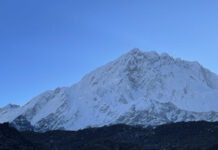Becoming fluent in English, studying at universities that are references in terms of teaching quality, expanding your cultural background and making both friendships and professional contacts with people of different nationalities – these are undoubtedly some of the main reasons to study in New Zealand. . However, it is undeniable that, apart from all that, many students are also looking at several places to visit during their study in New Zealand.
That’s because living in this small island country makes it easier to visit other nations in Oceania and live remarkable experiences given the proximity and air transport logistics that facilitate (and much) access to them.
It’s no wonder that many international students in New Zealand get excited and start researching in advance for possible destinations so as not to miss out on this opportunity. To help you, we’ve listed five options for must-see places. Follow and get inspired!
1. Fiji
For starters, Fiji or Fiji Islands, as it is also called due to its more than 300 islands. With almost 900,000 inhabitants, it gained popularity – especially the Mamanuca area – and aroused the curiosity of nature lovers by becoming the fixed location of one of the most famous reality shows in the West: Survivor.
And that’s not for nothing since, in addition to paradisiacal scenarios and a practically intact native vegetation, the region has a very rich cultural background that is the result of the mixture of the traditions and customs of the local tribes with the British influence of the colonization period.
Oh, and there’s more: Fiji is considered a mandatory stop for those who enjoy surfing. Its beaches with incredible waves attract tourists from all over the world. In addition, there are international disputes that take place annually in the country, such as the Outerknown Fiji Pro and the World Surfing Championship.
2. Palau
The second country on this list is Palau, which has just over 21,000 inhabitants – precisely because of this, it is one of the least populous nations in the world. However, don’t be fooled: despite having a low housing rate, it is a place full of attractions.
An example of this is the Rock Islands – considered by UNESCO as one of the world’s heritage sites -, a cluster of small islands that are basically huge rocky walls formed by corals in the middle of the Pacific Ocean.
But it doesn’t end there, as Palau has one of the most picturesque areas on the entire planet: Jellyfish Lake, a lake where tourists can dive and swim with jellyfish that are not capable of causing burns in case of contact (due to a natural mutation).
To top it off, the island of Peleliu retains several World War II wreckage preserved for visitation, from planes and tanks to shelters and hiding places used by both Americans and Japanese. Therefore, those who like history will love the tour in the region!
3. Samoa
One of the places to visit during your study in New Zealand that could not be missed in this post is Samoa. Formed by two small islands and with just over 190,000 inhabitants, this charming nation is marked by contrasts.
While Savai’i is less populated, has more protected areas (such as A’opo and Tafua Rainforest) and has the largest shield volcano – which spews lava responsible for creating the mountains — Upolu is known for being a most touristy place.
That’s why, outside of the Le Pupu-Pue park, you can enjoy the famous beaches of white sand and turquoise waters (such as Lalomanu, Salamumu, Nu’uavasa, Tafatafa and Vaiula) and, on top of that, visit the trendy historic center of the capital Apia – which, by the way, is the only municipality in the entire country. It is here that shops, bars, markets, official residences of State representatives, etc., are concentrated.
4. Papua New Guinea
A fourth alternative destination for those who want to travel through Oceania – and, who knows, take a trip to Asia – is Papua New Guinea, which has around 8 million people, borders Indonesia and is made up of a set of archipelagos.
The place is excellent for those who want to have contact with other realities, since there is a strong religious syncretism, a great diffusion of dialects and many indigenous tribes that influence the traditions and customs of the natives.
In fact, cultural festivals, such as Sing-Sing, are a great opportunity to see the colors, music, performances and customs of this part of the population up close. To top it off, the country is part of the Pacific Ring of Fire, an area marked by constant volcanic activity.
5. Australia
Finally, there is Australia, which is not only the most populous country in Oceania (24.2 million citizens), but also the largest in terms of land area (almost 8 million km²).
Second in the ranking of the highest Human Development Indexes – with an HDI of 0.939, according to a UNDP survey – the region stands out for its large urban centers, such as Sydney, Melbourne, Brisbane and Perth, which contrast with the large forest reserves. where appreciation and respect for nature prevail.
To give you an idea, on Australian soil there are more than 500 parks that function as an environmental protection area – Namadgi, Tidbinbilla, Blue Mountains, Kosciuszko and Myall Lakes are just a few examples.
In Queensland, in turn, is the famous Great Barrier Reef, an area that, like the Rock Islands, is also considered a UNESCO world heritage site. Formed by almost three thousand reefs, it is highly sought after by those who want to dive and check out the Australian marine fauna, which is composed of fish, turtles, molluscs, rays, sharks and much more.
As you have seen, there is no shortage of places to visit during your study in New Zealand. Therefore, it is worth putting together a diverse itinerary to explore as much as possible of these countries and the incredible experiences they can provide you.
However, don’t forget to plan ahead to maintain a balance between study and leisure and not compromise your performance during your chosen exchange program (English course, undergraduate, graduate, etc.), right?

































